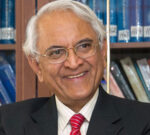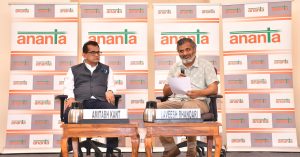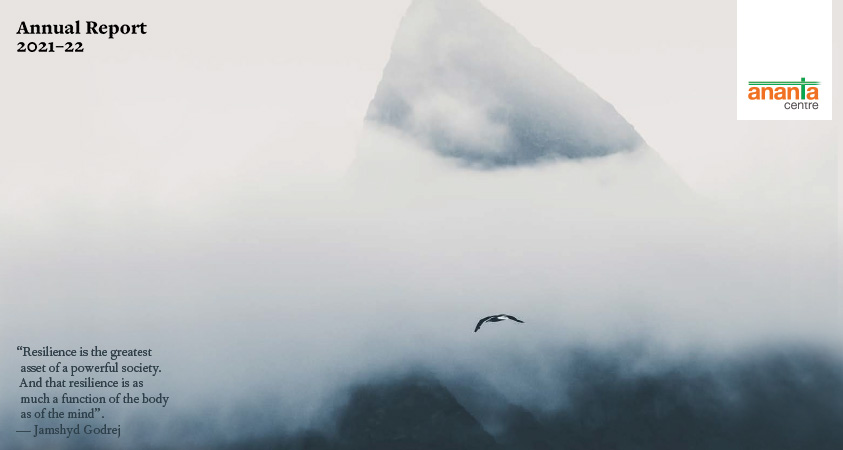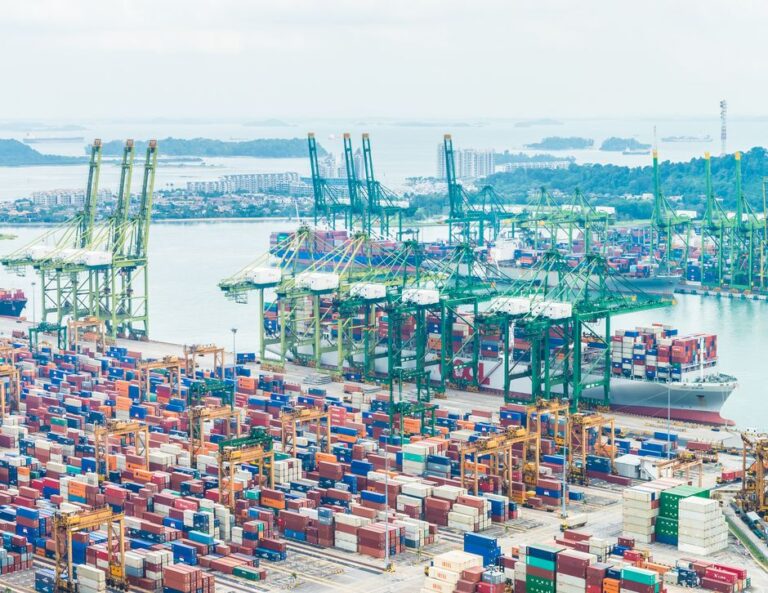Overview
• Russia & US talk and spar
• Ukraine crisis erupts; a lid is put on it
• A band-aid for India-Russia relations
Russia & US talk and spar
The US intelligence community had determined that Russia had interfered in the 2020 Presidential elections and that Russian intelligence was behind the Solar Winds cyber hacking. Tensions in eastern Ukraine were escalating. Just when it seemed the US-Russia hostility would move up a notch, President Biden telephoned his Russian counterpart on April 13. The Kremlin and White House readouts focussed on their respective priorities (with the domestic audience in view). The common element was that they discussed regional and global issues and the potential for US-Russia cooperation on security, arms control and major global issues. Both readouts noted President Biden’s desire for “stable and predictable” bilateral relations – the White House added the qualification, “consistent with U.S. interests”. The White House said Biden asserted that the US will defend its national interests in response to cyber intrusions and election interference from Russia, reaffirmed the US’s unwavering commitment to Ukraine’s sovereignty and territorial integrity, and called on Russia to de-escalate tensions on Ukraine’s borders. On his part, Putin is said to have emphasized that the “internal Ukrainian crisis” has to be resolved in accordance with the Minsk agreements.
President Biden proposed a summit meeting in a third country in the coming months to discuss the full range of issues facing the US and Russia. The Kremlin did not mention President Putin’s response. His spokesman subsequently said that it was a good idea, despite the many issues of disagreement, but “actions should suit words”.
Two days after the telephone conversation, the US announced sanctions in retaliation to the alleged Russian interference in the elections and the cyber hacking of US federal agencies, for which the US fixed responsibility on the Russian Foreign Intelligence Service (SVR). The actions announced included the expulsion of 10 personnel from Russian diplomatic missions in the US, sanctions on 32 entities (including six Russian technology companies) and individuals, and prohibiting US institutions from transactions in the primary market for rouble denominated bonds issued by Russian government institutions.
On April 21, Russia responded with its counter-sanctions, naming 10 personnel of the US Embassy in Moscow to be withdrawn within a month. Russia also decided to impose an entry ban on 8 US high-ranking officials (present and past), involved in drafting and implementing anti-Russia policy, including the Attorney General, Secretary of Homeland Security, Directors of FBI and National Intelligence, the head of the Federal Bureau of prisons and the White House Policy Director & former NSA (and diehard Russia critic) Susan Rice. For good measure, the Russians also threw into this mix another former NSA John Bolton and former CIA Director Robert Woolsey. Except for the two former officials, the Russian list roughly mirrored the entry ban imposed by the US in February, following the EU action to “punish” Russia for its treatment of opposition activist Alexei Navalny, on seven top Russian officials. (Review, 2/21) New restrictions were announced on the number of staff coming to Russia for temporary duties in US diplomatic missions and on the travel of Mission personnel within Russia. The hiring of local and third country staff in US missions was banned. Further restrictions on the operation of US foundations and NGOs are also on the anvil. While not formally asking the US Ambassador to go home and consult his bosses, an MFA press release offered the gratuitous advice that “this very tense situation objectively requires ambassadors of our countries to be in their respective capitals to analyse developments and hold consultations”. Russia had already recalled its Ambassador after the famous Biden interview, in which he was nudged into agreeing that he thought Putin was a “killer”. The US Ambassador did eventually take this advice and returned home for a spell of consultations.
There was more than a hint of shadow boxing in the sanctions and the accompanying rhetoric. Expulsion of diplomats is little more than symbolic in nature. Except for one IT company, whose business may be affected, the remaining sanctioned Russian entities had little contact with the US. The prohibition on acquiring rouble bonds in the primary market may increase transaction costs, but does not prevent American financial institutions from trading in the secondary market or even buying new issues through intermediaries – offshore funds or companies. The rouble and Russian stocks, which were bracing for stronger sanctions, surged after digesting the impact of the US announcement. Similarly, the Russian sanctions, though accompanied by much harsher language, are little more than a minor irritation for the Americans. The Russian MFA frankly admitted that Russia did not have the economic tools to hurt the US, but hinted darkly that it had other tools in its armoury, in case they are required.
On the day that he signed the order on sanctions, President Biden made detailed public remarks on Russia. He said his conversation with President Putin had been “candid and respectful”, adding that the US and Russia are “two great powers with significant responsibility for global stability” and that both their leaders “take this responsibility very seriously”. Russians and Americans are both “proud and patriotic people”. The Russian people, like the American people, are “invested in a peaceful and a secure future of our world”. No US President has talked like this about Russia, Russians or its leadership, at least since 2014.
On the sanctions, President Biden said Russian culpability in election meddling and the Solar Winds hack compelled him to respond, but he had done so in a “measured and proportionate way”, and had also urged his Russian counterpart “to respond appropriately, not to exceed it”, because that would force him to go further. In other words, to do just as much as is reciprocal, so that they could move on from there.
President Biden reminded his audience that, throughout their long history of competition, Russia and the US have been able to find ways to prevent tensions from escalating out of control. Personal and direct communication between their leaders is essential for “a more effective relationship”. Hence his proposal that they meet in person in Europe this summer. He hoped the summit would help launch a strategic stability dialogue and help address critical global challenges that require Russia and the US to work together, like Iran, North Korea, the pandemic and climate change. This, he declared, is the time to de-escalate and move forward “through thoughtful dialogue and diplomatic process”. At the same time, the President asserted his bottom line that whenever Russia violates US interests, it will be met with a firm response.
There was no specific Russian response to this significant Presidential speech, which more than erased his earlier description of President Putin as a killer. However, as noted above, the Russians heeded the advice to be proportionate in their response to sanctions. The Russian Foreign Ministry, which often plays the bad cop to President Putin’s good cop, was harsh in some of its language on US behaviour, but also affirmed that Russia would like to avoid further escalation and is ready to engage in “calm and professional dialogue” to normalise bilateral ties with the US.
The White House subsequently announced that US NSA Sullivan spoke by phone with his Russian counterpart to discuss bilateral relations, regional and global issues, and “the prospect of a presidential summit”. The Kremlin acknowledged summit discussions more obliquely in its report that the Austrian Chancellor called President Putin on April 30 and offered Vienna as the venue of a potential US-Russia summit.
The stage, therefore, appears to be set for a US-Russia summit in Europe in June. It should be noted, however, that the conversion rate of a US-Russia summit proposal into an actual summit has been less than 50 percent in recent years. Both objective and subjective factors are at work. There is bipartisan hostility towards Russia in the US Congress, which is reflected also in the intelligence community and the Pentagon, among other constituencies. In his recent book, India and Asian geopolitics, Ambassador Shivshankar Menon draws attention to “militarization or securitization of foreign policy” in the US (and China) – the increasing role of the military in policy formulation, at the expense of traditional civilian hierarchies, and – consequently – the growing tendency to see issues “in zero-sum terms”. Russia’s foreign policy has definitely moved in the same direction during President Putin’s stewardship. In addition to the US factors is opposition from its Central European, Baltic and Scandinavian allies to a US-Russia rapprochement, until outstanding issues relating to Ukraine and other global hotspots are satisfactorily resolved. All these factors have inevitably introduced a Cold War-like character to US-Russia interactions. Hence, no US-Russia summit is certain, until it takes place, since a real or perceived provocation could derail it.
Ukraine crisis erupts; a lid is put on it
The obvious dark cloud that could rain on the US-Russia summit proposal is the continuing Russia-West tensions over the situation in Eastern Ukraine. Towards the end of March, media reported a massive build-up of Russian troops with heavy equipment on Ukraine’s border and in Crimea. Speculations were rife about an imminent unprovoked Russian invasion of Ukraine. From a Russian perspective, it looked somewhat different.
Earlier issues of this Review have noted that the course of negotiations for a political settlement of the conflict in eastern Ukraine has resembled that of a snakes-and-ladder game. The latest climb up the ladder commenced with a Paris summit meeting of the “Normandy Four” (France, Germany, Russia, Ukraine) in December 2019, at which it was agreed to strictly implement the provisions of the Minsk accords of 2014-15. The somewhat hesitant progress on this stalled sometime after July 2020, as various domestic and external players felt that the likely change of guard in the White House could tilt the balance of possibilities in their favour. The ceasefire broke down, casualties increased and mutual recriminations mounted. President Zelenskyy was facing criticism from Ukrainian nationalists for having succumbed to Franco-German pressure in Paris. The Minsk agreements were the outcome of the military situation on the ground at that time, and have the stamp of approval of the UN Security Council, but many in Ukraine, Europe and the US have continued to oppose their implementation, on the ground that it would hand Russia a major strategic advantage (including legitimizing its annexation of Crimea). It was widely expected that the election of President Biden would empower this opposition, since he was closely involved in Ukrainian developments after the annexation of Crimea.
President Zelenskyy started backsliding on the Minsk Agreements, asserting that they should be renegotiated, since they cannot help Ukraine to regain Crimea (the latter is factually correct, since the agreements do not mention Crimea). He called for the inclusion of President Biden (and leaders of UK and Canada) in the Normandy format, or the launch of a new format that would put more pressure on President Putin. He has also talked of Ukrainian troops first gaining control of the border with Russia, before implementing other provisions of the Minsk accords (reversing the sequence laid down in the accords).
Ukraine may have discerned, from its initial contacts with the incoming Biden Administration, a green signal to go harder on Russia (as the Poroshenko government had done during the Obama Administration). In February, President Zelenskyy closed down some “pro-Russian” media outlets, and thereafter moved to clip the wings of a number of Ukrainian “oligarchs”, who dominated various sectors of the economy. Though portrayed as a move to dismantle Ukraine’s corrupt oligarchic system, it covered only the “Russia-friendly” oligarchs. On March 24, President Zelensky, signed a decree declaring his government’s strategy for reintegration of the “temporarily occupied territory” of Crimea and the city of Sevastopol. According to the Russians, these actions were accompanied by a significant movement of Ukrainian troops and heavy equipment to the ‘contact’ line with Donbas. Meanwhile, the Pentagon had announced a US$ 125 million package for “defensive” weapons to help Ukraine against Russian aggression.
Russia explained its rapid and massive build-up of troops for “military exercises” on the Ukrainian border and in Crimea, as action to forestall Ukrainian military action in Donbas and/or Crimea. Amid reports of British and US warships moving towards the Black Sea “in defence of Ukraine”, Russia strengthened its naval presence there by moving in 15 vessels from the Caspian Sea and three destroyers from the Baltic Sea. Next, Moscow announced that it would be carrying out naval exercises in the region and, barred foreign warships or state vessels from three areas in the Black Sea for six months.
The massive troop deployment provoked reactions in Ukraine, Europe and the US, with a series of statements and a flurry of telephone calls, but falling short of strong action. The US State Department spokespersons frequently (usually in response to queries), expressed “concern” about escalating Russian aggressions in eastern Ukraine and Crimea, troop movements on the border and intimidation of Ukraine, going on to add that these concerns are being discussed with NATO allies. While the Russian troop build-up was still in full intensity in end-March/early-April, President Biden, Secretary of State Blinken, NSA Sullivan and Defence Secretary Austin all spoke to their Ukrainian counterparts, with near-identical messages (as per official US readouts). They conveyed “unwavering support for Ukraine’s sovereignty and territorial integrity in the face of Russia’s ongoing aggression”, without spelling out what that support would entail. The message was also somewhat diluted by the warning (in the same conversation) that tackling corruption and strengthening democratic institutions are essential requirements for Ukraine to realize its Euro-Atlantic integration dream (ie. aspirations to join NATO). In end-April, both the US and EU publicly and harshly rapped the Ukrainian government on its knuckles for changing the management of a leading energy company by manipulating regulations and disregarding transparent corporate governance practices. The State Department release urges Ukraine’s leaders to “do their part”, even as the US supports Ukraine in advancing democratic institutions. The EU sent a similar message.
Meanwhile, the US Chairman of the Joint Chiefs of Staff talked on the phone with his Russian counterpart on March 31; the US readout did not mention the troop build-up; only that the two had “exchanged views on issues of mutual concern”. The US read-out of the US-Russia NSA-NSA conversation on the presidential summit did not mention the troop build-up.
The French and German foreign offices also reaffirmed, in a joint statement, their support for the “sovereignty and territorial integrity of Ukraine”, but then proceeded to equate the actions of both sides by calling “on all parties to exercise restraint and work toward the immediate de-escalation of tensions”.
President Putin, Chancellor Merkel and President Macron jointly agreed on March 30 that “there is no alternative to the Minsk agreements”. The same message was conveyed to President Zelenskyy in his trilateral meeting with President Macron and Chancellor Merkel. France and Germany had separately proposed to Ukraine concrete steps for implementation, with some minor tweaking of the methodology earlier agreed in July 2020.
Even more tellingly, Foreign Ministers of the G7 (which includes the two staunchest supporters of Ukrainian opposition to the Minsk accords), meeting in London on April 12, reiterated deep concern at the Russian military build-up that represents “threatening and destabilising activities”, reaffirmed “unwavering support for the independence, sovereignty and territorial integrity of Ukraine” and supported its “posture of restraint”, but then went on to express “strong appreciation and continued support for France’s and Germany’s efforts through the Normandy Process to secure the full implementation of the Minsk agreements, which is the only way forward for a lasting political solution to the conflict”(emphasis added). This is the exact formulation that Moscow has repeated over the years. G7 statements normally urge Russia to fulfil the Minsk agreements or upbraid it for not doing so.
It was only when Russia closed off sections of the Black Sea on the plea of naval exercises that the US State Department responded with a strong statement, expressing deep concern, noting Russia’s history of aggressive actions impacting Ukraine’s foreign trade, describing Russia’s ongoing campaign “to undermine and destabilize Ukraine as “particularly troubling”, amid “credible reports” of levels of Russian troop build-up not seen since 2014. The statement added the important reassurance to Ukraine that “the United States does not, and will never, recognize Russia’s purported annexation of Crimea”. Having said all this and calling on Russia to cease harassment of vessels and reverse its troop build-up, it does not talk of any consequences of Russia ignoring this advice. Russia accepted this advice partially, after the NSA-NSA call, which confirmed the summit and must have touched on the troop build-up as well. Defence Minister Shoigu announced that most of the troops inducted into Crimea and the Ukrainian border would be withdrawn, having completed their exercises. However, some heavy weaponry will remain, keeping an eye on the US-NATO Defender Europe 2021 military exercises, which will be moving to Poland and the Baltic and Black Sea regions. The dictum, Trust, but verify, is often attributed to Ronald Reagan, but it is originally a Russian proverb. In the current scenario, the Russians are more likely to follow the converse: verify, then trust.
These developments have been obviously influenced by President Biden’s decision (which must have been shared with key allies) to de-escalate tensions with Russia and press ahead towards a summit. They do not necessarily mean a Ukraine settlement is closer. A fresh provocation could derail the summit, as has happened at least twice recently. A summit cannot produce an immediate resolution, because of the complex, interlinked and conflicting interests involved. A US-Russia modus vivendi could mean various levels of confrontation and compromise across issues and geographies. The Ukraine issue, particularly Crimea, is most certainly not a low-hanging fruit.
A band-aid for India-Russia relations
As India felt the onslaught of the second wave of Covid, President Putin telephoned Prime Minister Modi, expressing support and offering emergency humanitarian aid. Over the next 24 hours, two planeloads of cargo arrived in Delhi, with 22 tonnes of cargo, including oxygen units, medical monitors and an assortment of drugs. The MEA release said the PM described the support “a symbol of our enduring partnership”.
PM Modi tweeted immediately after the conversation that he had “an excellent conversation with my friend President Putin”, thanked him for Russia’s support and reviewed the “diverse bilateral cooperation”. He expressed appreciation for Russian training of Indian astronauts for India’s manned spaceflight programme. Renewable energy was discussed, including the hydrogen economy, as a promising area of cooperation. The registration in India of the Russian vaccine, Sputnik V was duly hailed. According to the Russian promoter, over 850 million doses will be manufactured annually in India.
The most significant takeaway from the conversation was the decision to establish a 2+2 dialogue at the level of Foreign and Defence Ministers. This demonstrates commitment to the strategic elements of the partnership and is a platform for synchronizing positions and pragmatically managing divergences (which are inevitable in today’s complex geopolitics) on global security issues.
The month-end conversation corrected some of the unsweet after-taste of Russian Foreign Minister Lavrov’s early-April visit to India, where the spirit of the “special and privileged strategic partnership” was not much in evidence, and his subsequent Pakistan trip, where he basked in the adulation of a red-carpet welcome – received on the tarmac by the Foreign Minister and meeting the Army Chief and the PM. In India, he could not meet the Prime Minister – the first time this has happened to a Russian foreign minister.
Lavrov did not quite succeed in dispelling the odour of his diatribe of a few months ago about the US dragging India into an anti-China alliance by its Indo-Pacific initiative. Though he was more circumspect in his comments in Delhi, the Indo-Pacific continues to rankle. He wove into a comment on the Middle East a reference to the idea of an Asian NATO gaining traction, “through Indo-Pacific strategies”. Answering a question in Pakistan, he referred to “ambiguous processes” in the Asia-Pacific, where a “disruptive US-led geopolitical structure is being created”.
The Russians are clearly not convinced by India’s argument that its Indo-Pacific activities are not leading to an India-US alliance. Russia has an unlikely supporter in this view, in Ambassador Menon, who comments (in his above-mentioned book) that the Indo-Pacific concept is “dangerously out of touch with reality” as a security solution. He believes that “some” in India want to go “cap in hand, seeking security in alliance with others, chasing status, glory, and approbation”. There is a need for better clarity and communications, internally and externally, about the scope and limits of India’s Indo-Pacific engagement.
Russia-China relations was the other elephant in the room that received only passing mention. Lavrov told a journalist that Russia-China relations are not “aimed at establishing a military alliance”, though they are very close. The Russia-China embrace includes close political, economic and defence cooperation, with advanced technology- and intelligence-sharing. Russia accounted for 77% of China’s arms imports in 2016-20. President Putin had remarked last October that he would not rule out a future Russia-China military alliance. Rather than take FM Lavrov’s word for it, therefore, PM Modi would want credible reassurance from the ultimate maker of Russian foreign policy, when he meets President Putin later this year, that Russia-China relations will not move in directions inimical to India’s security interests. Even a limited US-Russia rapprochement, if it happens, can increase Russia’s political space vis a vis China.
FM Lavrov’s visit to Pakistan was the first time that a Russian minister has gone there directly from India. The relationship has expanded in range and depth, including its latest form in Afghanistan – Pakistan has helped Russia’s engagement in that country’s political processes, by facilitating some vital links with the Taliban. Trade is increasing: Lavrov noted that Russia’s wheat exports alone were over $200 million in 2020. A largely Russian-financed North-South gas pipeline project, linking Karachi and Kasur (near Lahore) seems to be making progress, after initial delays. Lavrov confirmed that Russia would strengthen Pakistan’s “counter-terrorism capability” — a euphemism used by the U.S. earlier for its weapons supplies to Pakistan. Russia is now Pakistan’s second largest defence supplier, accounting for 6.6% of its arms imports in 2016-20. Their cooperation includes “counter-terrorism” drills and (perhaps of greater concern to India) sharing perspectives on military tactics and strategic doctrines.
At the same time, Russia remains a major supplier of cutting-edge military technologies to India. The latest arms transfers’ report of the Stockholm International Peace Research Institute (SIPRI) records that Russia supplied 49% of India’s arms imports in 2016-20. The proportion has been falling, as India diversifies its imports. Despite this, India’s second largest supplier, France, had only an 18% share. SIPRI estimates that recent Indian orders for Russian arms could boost future import figures. This is a reality check. Defence cooperation is neither a transactional, nor a transferable, exchange. Sharing of technologies and strategies is underpinned by a mutual commitment to protection of confidentiality. Sustainable defence cooperation is based on a credible assurance that what is transferred to our adversaries will not blunt the effectiveness of our weapons systems. There are both political and technological issues involved, which need sustained discussions – not only with Russia, but also with other defence suppliers. France, which is a major Indian defence partner, is also China’s second largest arms supplier, accounting for about 8% of its arms imports in 2016-20.
*******
…………………………………………………………………………………………………………………
(The views expressed are personal)
The Author can be reached at raghavan.ps@gmail.com
…………………………………………………………………………………………………………………
























